
Why Our VIP Is “Smart” Insulation: Best-in-Class Performance in Millimetres
Side-by-side, our VIPs deliver target U-values in millimetres that foams and wools need centimetres for—saving space, weight and energy without compromising fire strategy.

Side-by-side, our VIPs deliver target U-values in millimetres that foams and wools need centimetres for—saving space, weight and energy without compromising fire strategy.

Holds 2–8 °C for ~6.13 days at 25 °C ambient with pre-chilled contents. Inside: VIP-PU hybrid walls, medical-grade finishes, GDP-friendly features and sizes for vaccines, biologics and reagents.

Flexible VIPs deliver ultra-low thermal conductivity with custom shapes for tight spaces across buildings, EVs, cold chain and electronics—real savings, now.

Add a thin VIP and watch U-values collapse: concrete 3.4→0.159, brick 2.3→0.155, cavity 1.5→0.150. Clear maths, real-world gains, zero loss of floor area.

PU–VIP Deep Cold Boxes hold 2–8 °C for 3 days at 30 °C ambient with pre-chilled loads—foldable or rigid, HACCP-friendly, and five times more insulating than XPS.

DVIP pairs A1 non-combustible cladding with vacuum insulation to cut heat loss and upgrade façades—ideal for external walls and internal roof retrofits.

Ultra-thin, flexible VIPs cut HVAC load, tame heat soak, and smooth battery temperatures—gaining range in extremes without adding bulk or redesigning the vehicle.
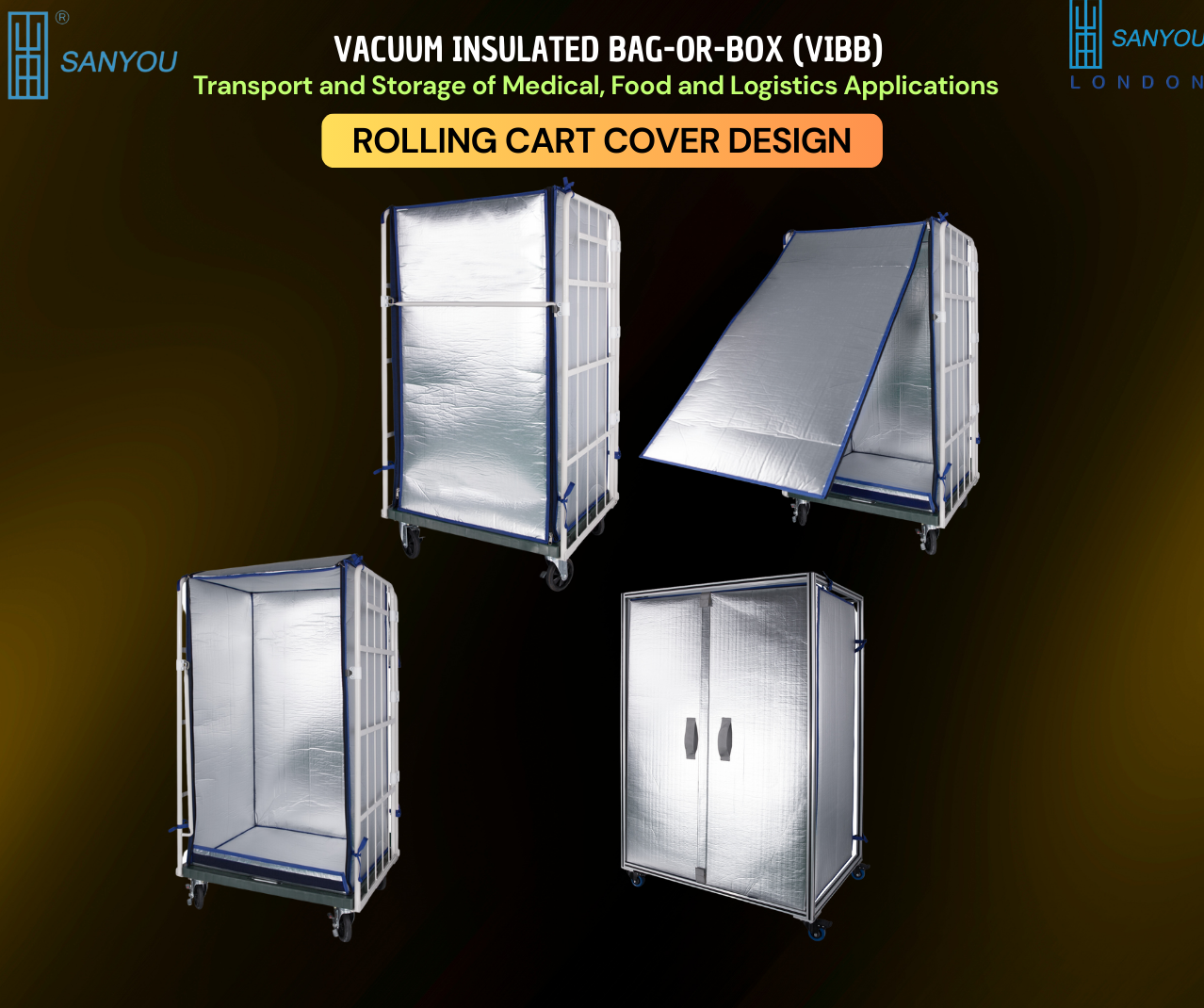
Hold cold under 10 °C for ~15 hours at 35 °C ambient (pre-chilled loads) or keep dishes warm with high-temp PCM packs. A rugged, roll-cage sleeve that turns any trolley into a mobile cold or hot store.

VIBB keeps temperature-sensitive goods in range for hours to days—no ice, no power. Medical, food and logistics solutions from compact bags to rolling cart covers.

Flexible VIPs laminate onto locally made tiles, stone and panels to create slim, net-zero-ready finishes—no new production line, no extra wall depth, lower HVAC loads and higher margins.

Keep food safely chilled below 10 °C for up to 6.5 hours at 35 °C ambient—power-free. The VIBB Fresh Bag brings VIP-grade insulation to riders, robots, picnics and daily errands.
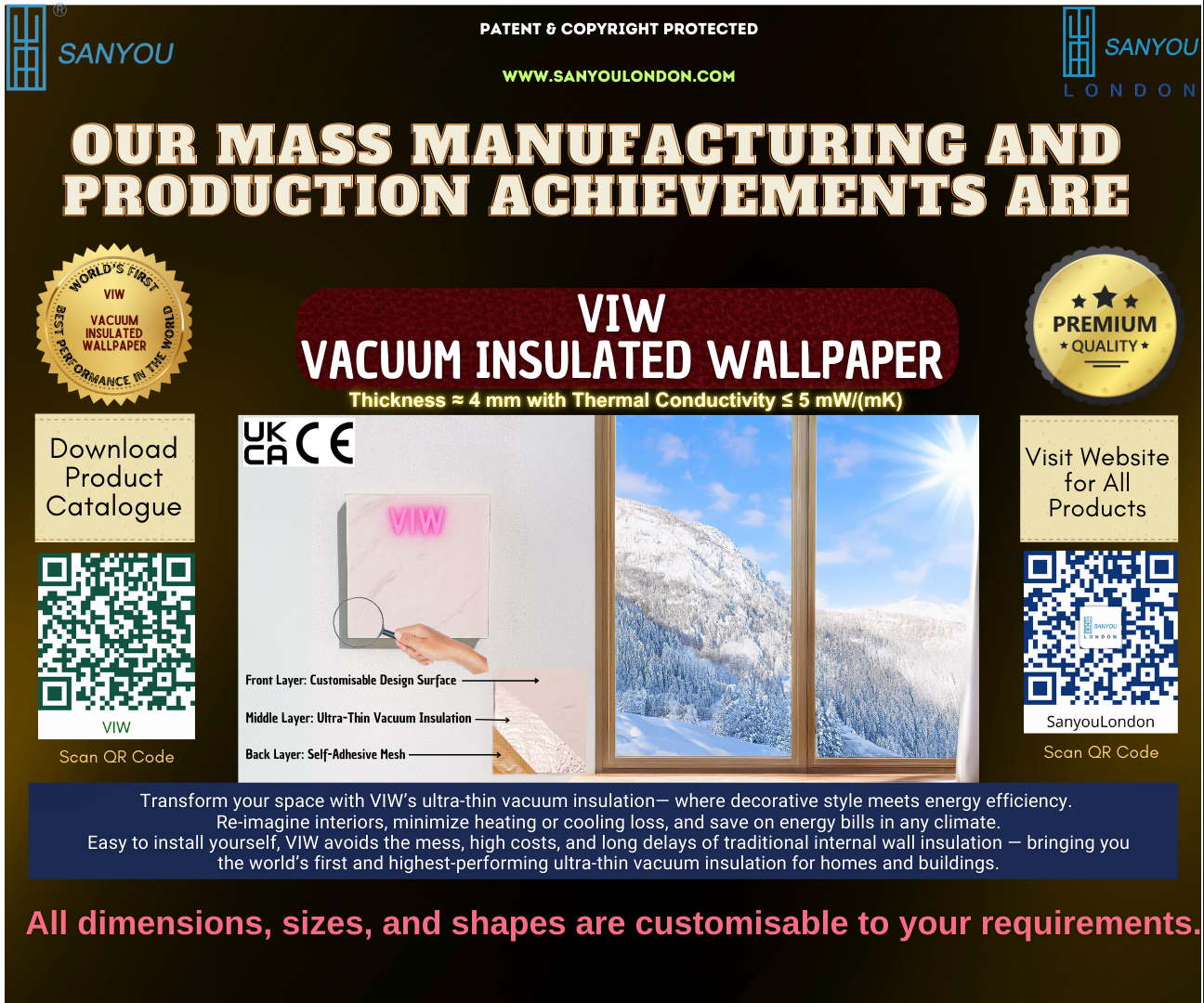
VIW is a 4 mm DIY vacuum-insulated wallpaper that slashes heat loss without contractors—affordable, stylish, and a clear step toward net-zero homes.

Flexible vacuum-insulation panels (VIPs) line trucks and ISO containers to slash heat ingress, trim reefer fuel, and preserve perishables—millimetre-thin, retrofit-friendly, and contractor-ready.
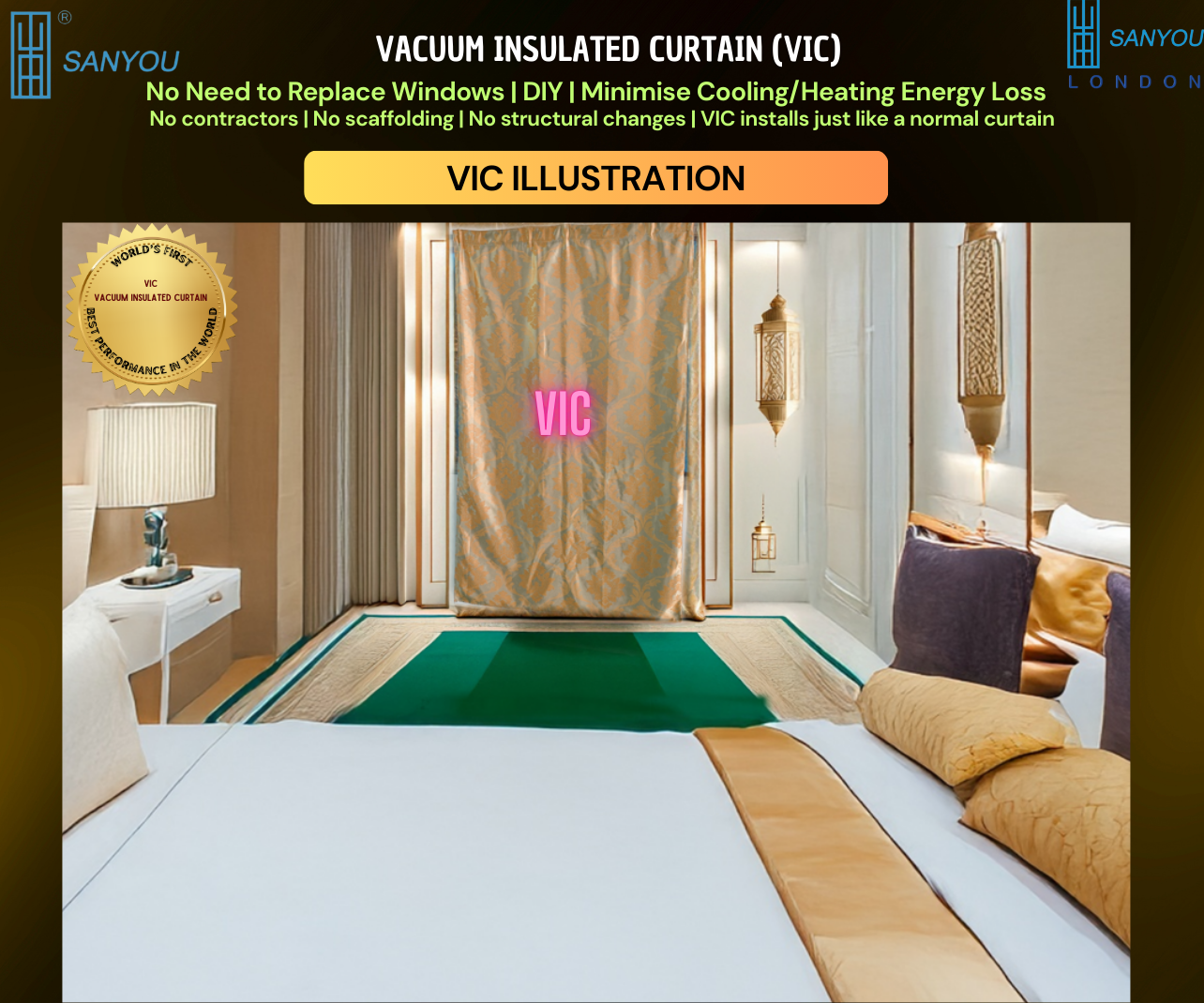
Big windows, big losses? Not any more. VIC is a portable, vacuum-insulated curtain that cuts cooling and heating loss, preserves the view, and installs like a normal drape—no contractors, no scaffolding, no glass swap.
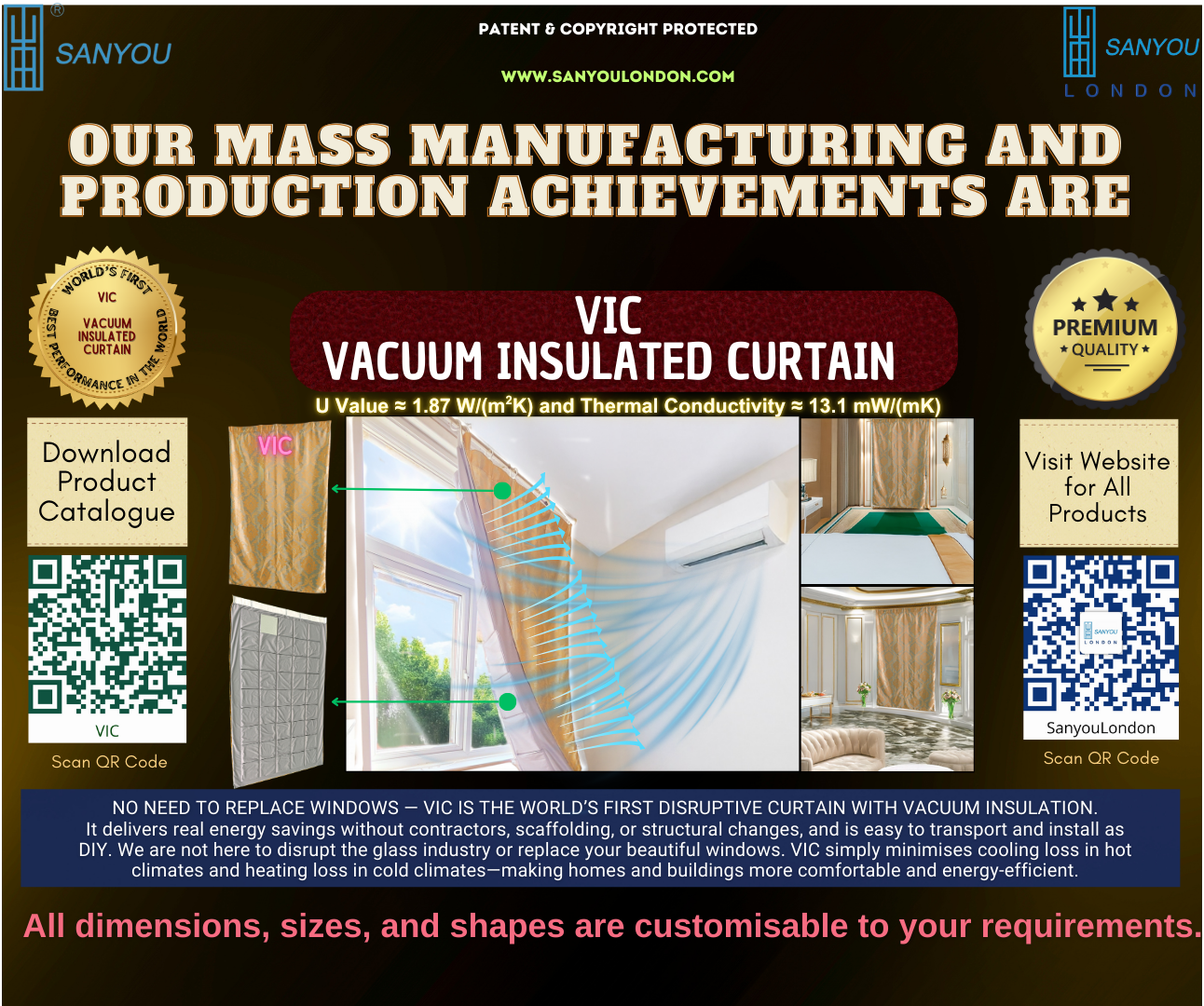
VIC hangs like a normal curtain yet insulates like no other—DIY install, no contractors, no window replacement, real savings for homes and rentals.

Integrate flexible vacuum-insulation panels (VIPs) into façades, roofs and floors to cut heat loss, tame thermal bridges and lower HVAC costs—without thick build-ups or major works.

See how a 7 mm Vacuum Insulated Curtain (VIC) achieves ≈1.87 W/m²·K U-value and delivers double-digit energy savings in hot and cold climates—without replacing windows.
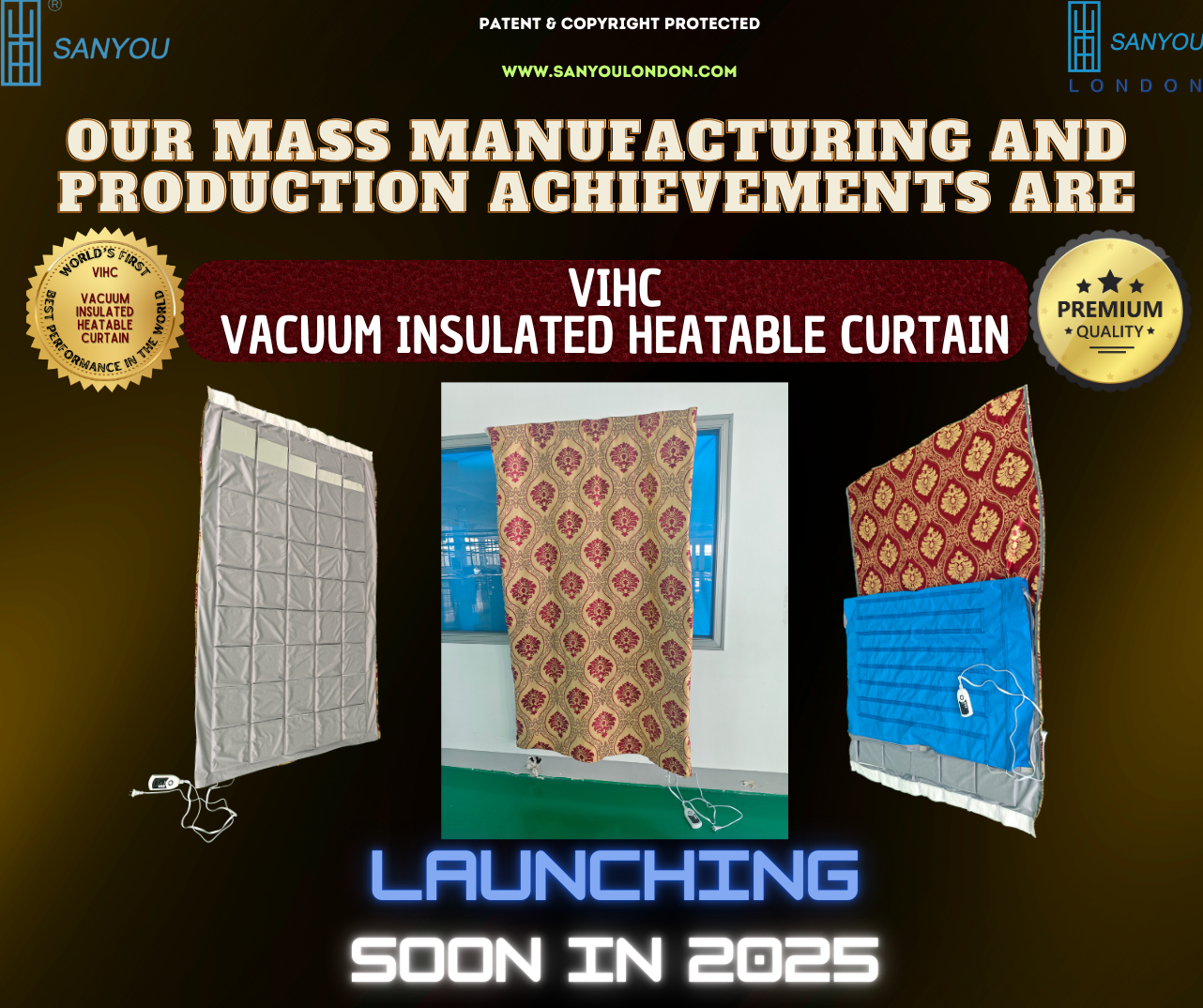
VIHC adds gentle radiant heat to our vacuum-insulated curtain: DIY install, low power (≈1 kWh for 3 hours), and real savings for UK and EU homes.

Flexible vacuum-insulation panels (VIPs) lift fridge efficiency and add net storage while ultra-thin VIP wraps on HVAC pipes slash heat gain, stop condensation and fit tight spaces—without bulky lagging.

A clear guide to VIP, DVIP, VIW, VIBB, VIC and VIHC—how each saves energy, where each shines, and how to choose for buildings, transport, EVs, data centres and cold chain.

Flexible vacuum-insulated panels tame hot spots, stabilise rack inlets, and cut cooling energy in AI halls, edge sites and control cabinets—millimetre-thin, retrofit-ready, and engineered for uptime.

Climate change, Carbon emissions, Energy efficiency, Vacuum insulation, VIP, DVIP, VIW, VIC, VIHC, VIBB, Net zero, Buildings, Cold chain, EVs, Data centres, Heat loss, U-value, Thermal conductivity, Sustainable retrofit, UK, EU, Middle East
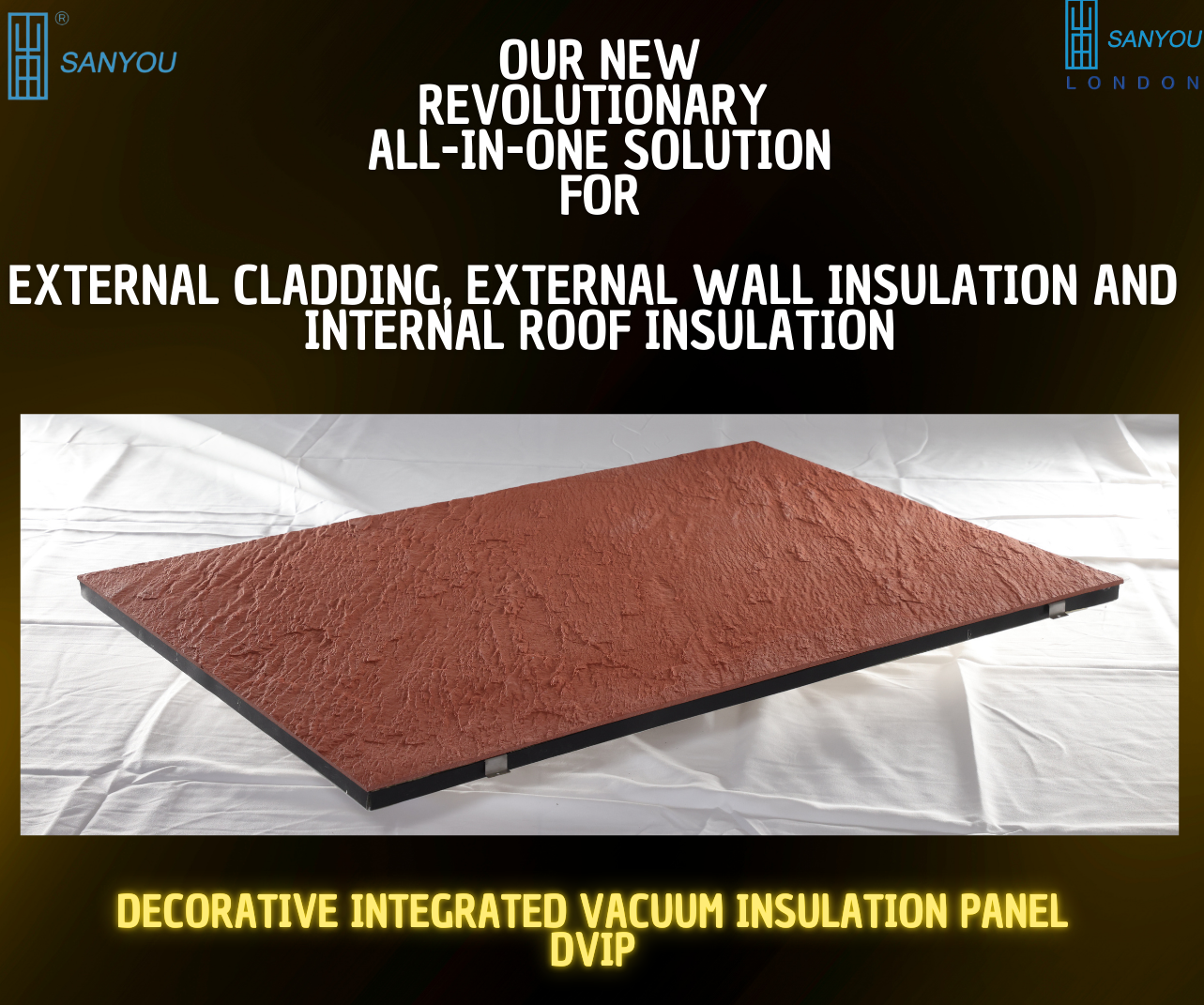
Stop stacking boards, barriers and finishes. A single 30 mm DVIP gives façade finish, insulation and fire class in one panel—cutting depth, weight, labour and heat loss.

Country-level gaps in insulation lock in avoidable heating and cooling demand. Here’s a fresh, practical case for vacuum insulation—grounded in physics, finance and operations.

One 30 mm DVIP (λ≈0.007 W/m·K; U≈0.22 W/m²·K) rivals 100–200 mm of bulk insulation. See clear, spec-grade maths on thickness equivalence, U-values, and where DVIP wins on space, programme and whole-life cost.

In hot climates, uninsulated glass boxes can jump from comfy to sweltering in minutes when chillers stop. See realistic heat-gain maths and how vacuum insulation slows the spike.

Two identical 5 m × 4 m test houses, one with DVIP (Sanyou London), one with non-vacuum panels. Results: ~22% lower AC energy, ~15% slower rewarming over 6 hours, and ~15 dB quieter. Methods, controls and practical implications inside.

Buyers pay the bills for 50+ years. Make insulation your USP: clear specs with vacuum-insulated walls, façades and window treatments that cut energy use without losing floor area.

Eight clear steps, tool list, site controls and QA checks for installing MCM and metal-type DVIP (Sanyou London). Fast, clean, and thin: high-performance cladding without the multi-layer chaos.

Buyers pay the bills for 50+ years. Make insulation your USP: clear specs with vacuum-insulated walls, façades and window treatments that cut energy use without losing floor area.

UK-friendly, renter-aware and truly DIY: 4 mm Vacuum-Insulated Wallpaper (VIW) reduces heat loss, trims bills, and lifts comfort—no builders, no scaffolds, no upheaval.

EPS, PIR, rock wool and glass wool each have real constraints—fire class, thickness, moisture, ageing, workmanship. Here’s a precise, no-nonsense guide and when to choose vacuum insulation instead.

Our 4 mm Vacuum-Insulated Wallpaper (λ≈0.005 W/m·K; design U≈1.3 W/m²·K) delivers big composite gains on real walls—up to 87% conductivity reduction—without losing floor area.

A true vacuum (≈1–10 Pa) suppresses gas conduction and convection, trims airborne noise, and can curb flame spread inside an insulation core. Here’s the plain-English science and how we apply it.

From cold bedroom walls to aircraft bulkheads, 4 mm VIW delivers slim thermal and acoustic gains without design compromise. See room-by-room and sector-by-sector applications, plus practical fit-out notes.

Vacuum Insulation Panel, VIP, Fumed silica, Super-fine fibreglass, Getter, Desiccant, Aluminium barrier, Edge seal, Gas-tight envelope, Thermal conductivity, Knudsen regime, Outgassing, Ageing life, Building retrofit, Cold chain, Product specification

Scale the thermos idea for real supply chains. VIBB holds target temperatures for hours to days without powered refrigeration—ideal for medical, food, agriculture and chemical logistics.